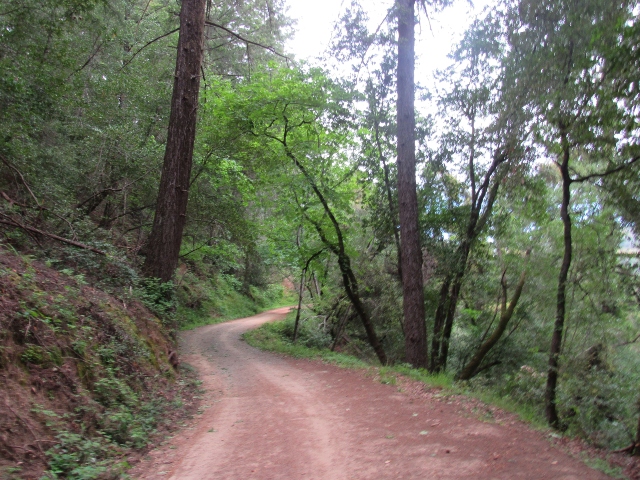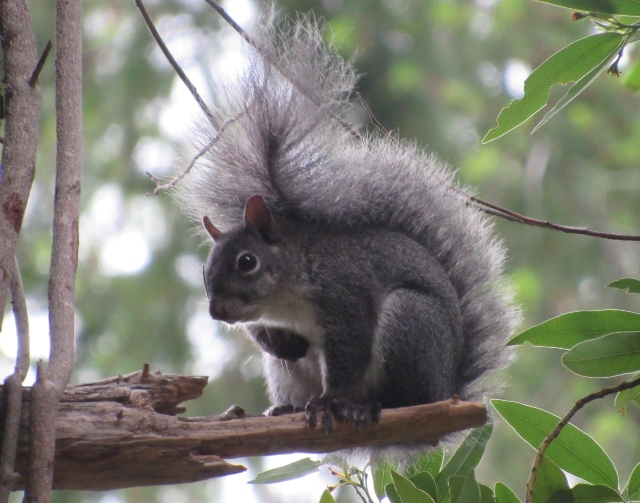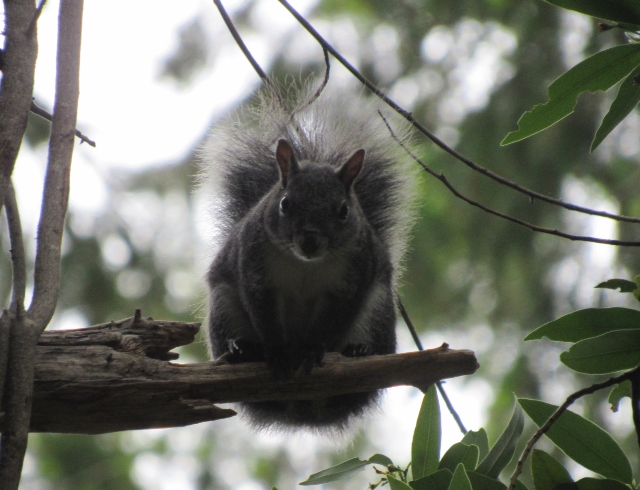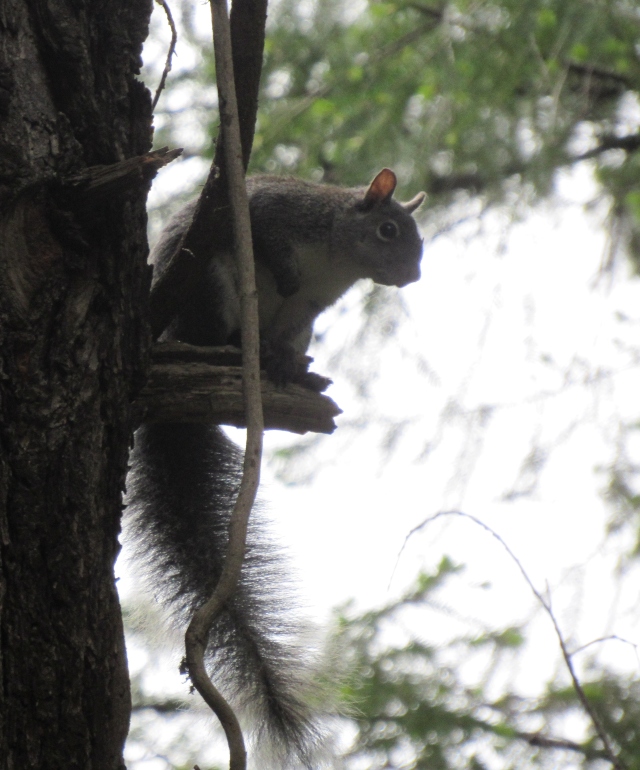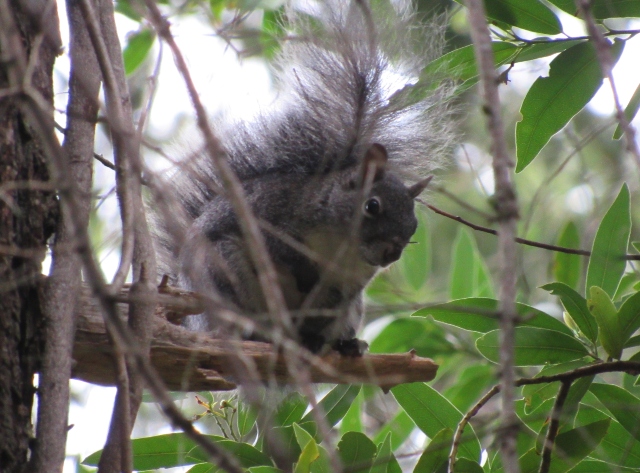I sometimes see this creature while hiking through wooded areas in California. I often see it in small groups of animals, rather than individuals. The Western Gray Squirrel is the largest tree squirrel native to the Pacific Northwest.
They are steel gray on the back, with contrasting white on the belly and throat, resulting in the name, “Silver Gray Squirrel” in some parts of their range. They are distinguished by their very long and bushy tails that are primarily gray with white-frosted outer edges.
These mammals are forest dwellers. Time on the ground is spent foraging, but they prefer to travel distances from tree to tree. They are strictly diurnal, and feed mainly on seeds and nuts, particularly pine seeds and acorns, though they will also take berries, fungus and insects.
When on alert, they will spread their tails lavishly, creating an umbrella effect that shields them and possibly provides cover from overhead predators. They are scatter-hoarders making numerous caches of food when it is abundant, and thus contribute to the seed dispersion of their food trees.
Like other tree squirrels, the Western Gray Squirrel has hypermobile joints, which means their ankles can rotate 180 degrees. This allows squirrels to descend trees head first. They can also use their rear claws to hold on to the tree trunk in this position, leaving their front paws free to eat.

